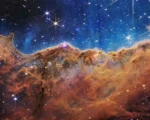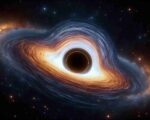A groundbreaking study has uncovered a remarkable discovery within the ultra-diffuse galaxy FCC 224, located approximately 65 million light-years away in the Fornax cluster. Researchers have identified an unusual system of overmassive globular clusters within the galaxy, marking a significant departure from typical expectations. Using data from the Hubble Space Telescope (HST) and spectroscopic observations from the Keck Cosmic Web Imager (KCWI), the team has been able to shed light on the galaxy’s unique star formation history and its stellar clusters’ extraordinary characteristics. This discovery adds a new dimension to our understanding of galaxy evolution, particularly ultra-diffuse galaxies, which are known for their faint, diffuse light and low surface brightness.
FCC 224, which has been found to be about 10 billion years old, contains a system of 12 remarkably bright globular clusters. These clusters, some of which have absolute magnitudes around -9.0, are far brighter than those typically seen in similar-sized galaxies. In total, the mass of these clusters is estimated to be 3.8 million solar masses, which is approximately 2 percent of the galaxy’s total stellar mass—an unexpectedly high ratio for a galaxy of this size. The discovery challenges previous assumptions about the structure and formation of ultra-diffuse galaxies, which are typically thought to have sparse, low-mass star clusters.
The research team has found that the globular clusters in FCC 224 show unique features compared to those in other galaxies. Notably, the clusters share a narrow color range, similar to the galaxy’s overall diffuse starlight, and they lack a significant color gradient. This observation supports the theory that FCC 224 underwent a single-burst star formation event. The clusters themselves are relatively small, with half-light radii ranging from 7.8 to 15.6 light-years. These sizes are considerably smaller than those of globular clusters in other, more typical galaxies, making them stand out as unique features of FCC 224.
One of the most striking findings is that the globular cluster population appears to be radially mass-segregated, meaning that brighter, more massive clusters are concentrated toward the galaxy’s center. This suggests a complex evolutionary process within the galaxy that may have led to the formation of such an unusual cluster system. The study provides crucial insights into the star formation mechanisms at play in ultra-diffuse galaxies like FCC 224 and opens up new avenues for exploring the ways in which these enigmatic galaxies evolve and develop their stellar populations.


















